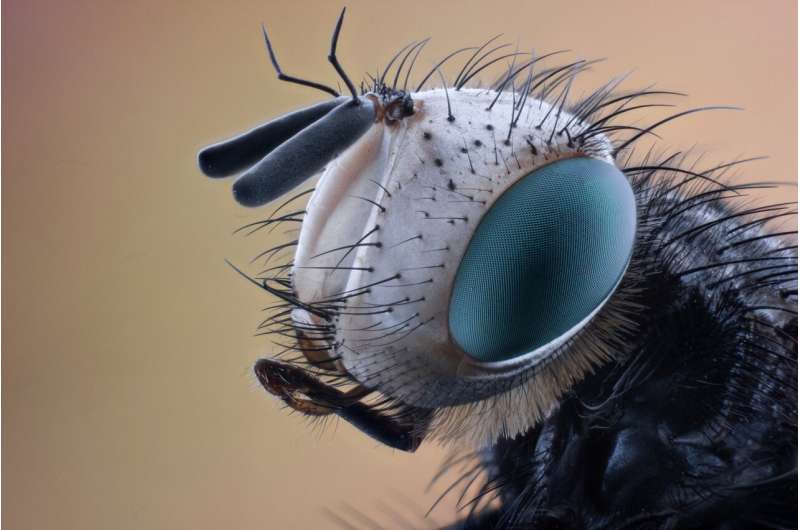Understanding How a Fly Sees the World and Its Implications for Disease Prevention

Explore how understanding a fly's unique visual perception can lead to innovative strategies for controlling disease-carrying flies and preventing illness.
Jakob von Uexküll, a pioneering Baltic German biologist, was among the first to explore the idea that animals perceive their environment in worlds vastly different from human experience. In 1934, he demonstrated this concept by using a simple fishing method: swinging an adhesive-covered pea on a thread to catch flies. Interestingly, male flies would often dive towards the pea and become ensnared, perceiving it as a potential mate within their perceptual universe.
While we can't know precisely what a fly’s perceptual world looks like, scientific insights suggest it is markedly different from our own. This understanding is crucial because it informs us how flies interpret their environment, which directly impacts how we can control them, especially as disease carriers.
Unlike humans who see through a single lens, flies have compound eyes composed of hundreds or thousands of tiny lenses called ommatidia. For example, a fruit fly's eye has around 700, while a blowfly's eye contains about 5,000. Each ommatidium contains light-sensitive cells called photoreceptors that gather visual data. The arrangement of these lenses limits the fly's ability to discern fine details but allows for rapid detection of motion.
Because of this structure, a fly perceives the world in a coarser, less detailed way compared to human vision. To match human visual resolution, a fly would need an eye about one meter across, which underscores how specialized their vision is for speed over detail.
One remarkable feature of fly vision is their ability to process visual information at astonishing speeds. Many fly species have photoreceptors that respond faster than those of humans, enabling them to see more than 200 flashes per second—far beyond our 50-90. This rapid processing explains why swatting flies is often ineffective, as they can startle and fly away before we even react.
In addition to their fast response, male flies possess unique eye adaptations called the "love spot," located at the top and front of their heads. This area has larger lenses and quicker photoreceptors, enhancing their ability to track mates during swift aerial courtship.
Understanding these visual capabilities is not merely academic. It offers practical avenues for pest control and disease prevention. For instance, flies are attracted to specific colors—traditionally blue for trap baits—but research suggests that purple, which appears similar to human eyes, is even more effective at attracting and trapping flies like tsetse and houseflies, both of which transmit serious diseases such as sleeping sickness.
Furthermore, flies perceive colors differently from humans. Most flies have photoreceptors sensitive to ultraviolet and other wavelengths beyond human vision, and they likely perceive only a limited set of colors—around four types—some of which do not correspond to anything humans commonly see. This difference opens new possibilities for designing more effective visual traps and control strategies.
Environmental factors, such as artificial lighting in urban areas, also influence fly behavior. Most artificial lights lack UV components and appear differently to flies, which may hinder their ability to differentiate between colors and consequently affect their movement and attraction patterns.
By investigating the fly’s perceptual world, researchers aim to develop better methods to manage fly populations, reducing their role as vectors for disease. This includes optimizing trap colors and lighting conditions to exploit flies' sensory biases, ultimately contributing to better public health outcomes.
Source: https://medicalxpress.com/news/2025-09-fly-world-vision-disease.html
Stay Updated with Mia's Feed
Get the latest health & wellness insights delivered straight to your inbox.
Related Articles
Effective Physician Guidance Can Minimize Opioid Use Post-Surgery
Recent research shows that physician counseling to use opioids as a last resort after surgery can significantly reduce opioid intake without increasing pain, aiding efforts to combat the opioid crisis.
Insurance Silence on COVID-19 Vaccine Coverage Sparks Uncertainty
Insurance companies currently maintain coverage for COVID-19 vaccines amid political and policy shifts, but future uncertainties loom as public health guidance evolves.
Reevaluating the Role of Beta Blockers in Heart Attack Recovery: Insights from a Cardiologist
Emerging research suggests that the benefits of beta blockers after heart attacks may depend on heart function, prompting a reexamination of traditional prescribing practices and personalized treatment approaches.
Innovative Bioprinted Organoids Enable Tumor Feature Capture and Prognosis Prediction
A novel 3D bioprinted tumor model combines patient-derived organoids with AI to accurately capture tumor features and predict patient prognosis, advancing personalized cancer treatment strategies.



